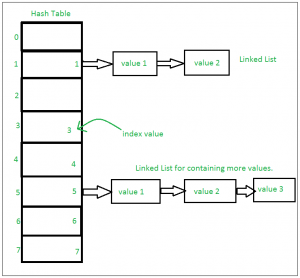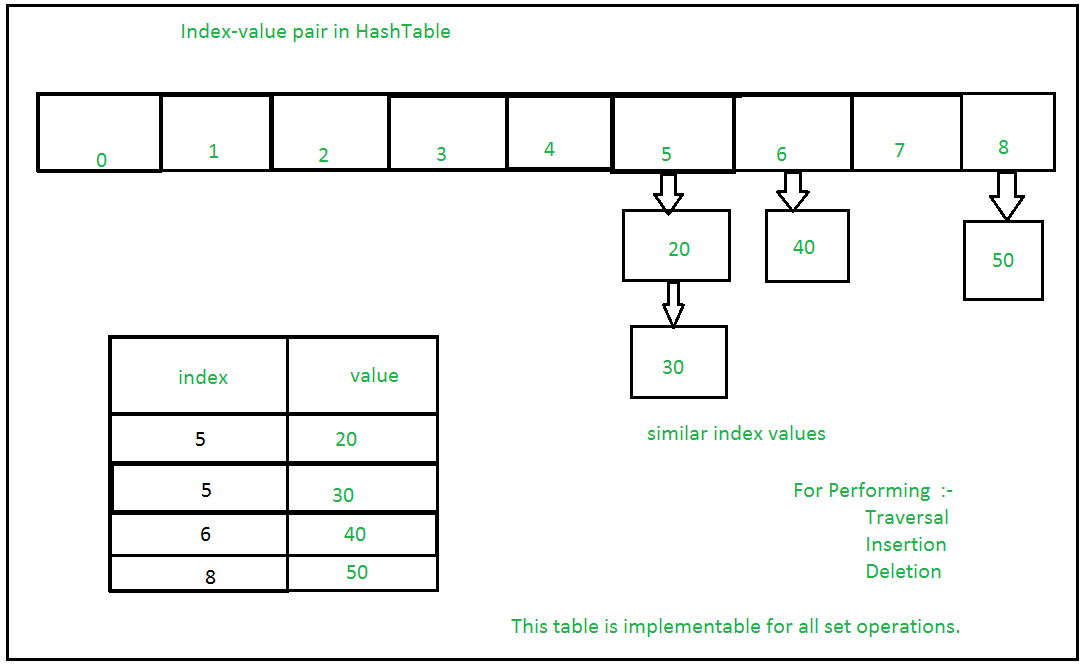Python How To Create Set
A Set is an unordered collection data type that is iterable, mutable and has no duplicate elements. Python's set class represents the mathematical notion of a set. The major advantage of using a set, as opposed to a list, is that it has a highly optimized method for checking whether a specific element is contained in the set. This is based on a data structure known as a hash table. Since sets are unordered, we cannot access items using indexes like we do in lists.
Attention geek! Strengthen your foundations with the Python Programming Foundation Course and learn the basics.
To begin with, your interview preparations Enhance your Data Structures concepts with the Python DS Course. And to begin with your Machine Learning Journey, join the Machine Learning - Basic Level Course
myset = set ([ "a" , "b" , "c" ])
print (myset)
myset.add( "d" )
print (myset)
Output:
{'c', 'b', 'a'} {'d', 'c', 'b', 'a'} Frozen Sets
Frozen sets in Python are immutable objects that only support methods and operators that produce a result without affecting the frozen set or sets to which they are applied. While elements of a set can be modified at any time, elements of the frozen set remain the same after creation.
If no parameters are passed, it returns an empty frozenset.
normal_set = set ([ "a" , "b" , "c" ])
print ( "Normal Set" )
print (normal_set)
frozen_set = frozenset ([ "e" , "f" , "g" ])
print ( "\nFrozen Set" )
print (frozen_set)
Output:
Normal Set set(['a', 'c', 'b']) Frozen Set frozenset(['e', 'g', 'f'])
Internal working of Set
This is based on a data structure known as a hash table.
If Multiple values are present at the same index position, then the value is appended to that index position, to form a Linked List. In, Python Sets are implemented using dictionary with dummy variables, where key beings the members set with greater optimizations to the time complexity.
Set Implementation:-

Sets with Numerous operations on a single HashTable:-

Methods for Sets
Adding elements
Insertion in set is done through set.add() function, where an appropriate record value is created to store in the hash table. Same as checking for an item, i.e., O(1) on average. However, in worst case it can become O(n).
people = { "Jay" , "Idrish" , "Archi" }
print ( "People:" , end = " " )
print (people)
people.add( "Daxit" )
for i in range ( 1 , 6 ):
people.add(i)
print ( "\nSet after adding element:" , end = " " )
print (people)
Output:
People: {'Idrish', 'Archi', 'Jay'} Set after adding element: {1, 2, 3, 4, 5, 'Idrish', 'Archi', 'Jay', 'Daxit'} Union
Two sets can be merged using union() function or | operator. Both Hash Table values are accessed and traversed with merge operation perform on them to combine the elements, at the same time duplicates are removed. Time Complexity of this is O(len(s1) + len(s2)) where s1 and s2 are two sets whose union needs to be done.
people = { "Jay" , "Idrish" , "Archil" }
vampires = { "Karan" , "Arjun" }
dracula = { "Deepanshu" , "Raju" }
population = people.union(vampires)
print ( "Union using union() function" )
print (population)
population = people|dracula
print ( "\nUnion using '|' operator" )
print (population)
Output:
Union using union() function {'Karan', 'Idrish', 'Jay', 'Arjun', 'Archil'} Union using '|' operator {'Deepanshu', 'Idrish', 'Jay', 'Raju', 'Archil'} Intersection
This can be done through intersection() or & operator. Common Elements are selected. They are similar to iteration over the Hash lists and combining the same values on both the Table. Time Complexity of this is O(min(len(s1), len(s2)) where s1 and s2 are two sets whose union needs to be done.
set1 = set ()
set2 = set ()
for i in range ( 5 ):
set1.add(i)
for i in range ( 3 , 9 ):
set2.add(i)
set3 = set1.intersection(set2)
print ( "Intersection using intersection() function" )
print (set3)
set3 = set1 & set2
print ( "\nIntersection using '&' operator" )
print (set3)
Output:
Intersection using intersection() function {3, 4} Intersection using '&' operator {3, 4} Difference
To find difference in between sets. Similar to find difference in linked list. This is done through difference() or – operator. Time complexity of finding difference s1 – s2 is O(len(s1))
set1 = set ()
set2 = set ()
for i in range ( 5 ):
set1.add(i)
for i in range ( 3 , 9 ):
set2.add(i)
set3 = set1.difference(set2)
print ( " Difference of two sets using difference() function" )
print (set3)
set3 = set1 - set2
print ( "\nDifference of two sets using '-' operator" )
print (set3)
Output:
Difference of two sets using difference() function {0, 1, 2} Difference of two sets using '-' operator {0, 1, 2} Clearing sets
Clear() method empties the whole set.
set1 = { 1 , 2 , 3 , 4 , 5 , 6 }
print ( "Initial set" )
print (set1)
set1.clear()
print ( "\nSet after using clear() function" )
print (set1)
Output:
Initial set {1, 2, 3, 4, 5, 6} Set after using clear() function set() However, there are two major pitfalls in Python sets:
- The set doesn't maintain elements in any particular order.
- Only instances of immutable types can be added to a Python set.
Time complexity of Sets
| Operation | Average case | Worst Case | notes |
|---|---|---|---|
| x in s | O(1) | O(n) | |
| Union s|t | O(len(s)+len(t)) | ||
| Intersection s&t | O(min(len(s), len(t)) | O(len(s) * len(t)) | replace "min" with "max" if t is not a set |
| Multiple intersection s1&s2&..&sn | (n-1)*O(l) where l is max(len(s1),..,len(sn)) | ||
| Difference s-t | O(len(s)) |
Operators for Sets
Sets and frozen sets support the following operators:
| Operators | Notes |
|---|---|
| key in s | containment check |
| key not in s | non-containment check |
| s1 == s2 | s1 is equivalent to s2 |
| s1 != s2 | s1 is not equivalent to s2 |
| s1 <= s2 | s1 is subset of s2 |
| s1 < s2 | s1 is proper subset of s2 |
| s1 >= s2 | s1 is superset of s2 |
| s1 > s2 | s1 is proper superset of s2 |
| s1 | s2 | the union of s1 and s2 |
| s1 & s2 | the intersection of s1 and s2 |
| s1 – s2 | the set of elements in s1 but not s2 |
| s1 ˆ s2 | the set of elements in precisely one of s1 or s2 |
Code Snippet to illustrate all Set operations in Python
set1 = set ()
set2 = set ()
for i in range ( 1 , 6 ):
set1.add(i)
for i in range ( 3 , 8 ):
set2.add(i)
print ( "Set1 = " , set1)
print ( "Set2 = " , set2)
print ( "\n" )
set3 = set1 | set2
print ( "Union of Set1 & Set2: Set3 = " , set3)
set4 = set1 & set2
print ( "Intersection of Set1 & Set2: Set4 = " , set4)
print ( "\n" )
if set3 > set4:
print ( "Set3 is superset of Set4" )
elif set3 < set4:
print ( "Set3 is subset of Set4" )
else :
print ( "Set3 is same as Set4" )
if set4 < set3:
print ( "Set4 is subset of Set3" )
print ( "\n" )
set5 = set3 - set4
print ( "Elements in Set3 and not in Set4: Set5 = " , set5)
print ( "\n" )
if set4.isdisjoint(set5):
print ( "Set4 and Set5 have nothing in common\n" )
set5.clear()
print ( "After applying clear on sets Set5: " )
print ( "Set5 = " , set5)
Output:
('Set1 = ', set([1, 2, 3, 4, 5])) ('Set2 = ', set([3, 4, 5, 6, 7])) ('Union of Set1 & Set2: Set3 = ', set([1, 2, 3, 4, 5, 6, 7])) ('Intersection of Set1 & Set2: Set4 = ', set([3, 4, 5])) Set3 is superset of Set4 Set4 is subset of Set3 ('Elements in Set3 and not in Set4: Set5 = ', set([1, 2, 6, 7])) Set4 and Set5 have nothing in common After applying clear on sets Set5: ('Set5 = ', set([])) Recent articles on Python Set.
This article is contributed by Jay Patel. If you like GeeksforGeeks and would like to contribute, you can also write an article and mail your article to contribute@geeksforgeeks.org. See your article appearing on the GeeksforGeeks main page and help other Geeks.
Please write comments if you find anything incorrect, or you want to share more information about the topic discussed above
Python How To Create Set
Source: https://www.geeksforgeeks.org/sets-in-python/
Posted by: dipalmadight1942.blogspot.com

0 Response to "Python How To Create Set"
Post a Comment